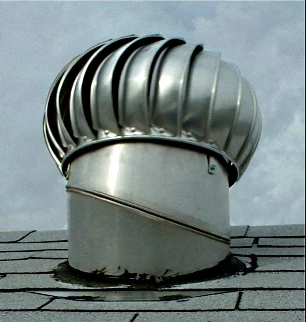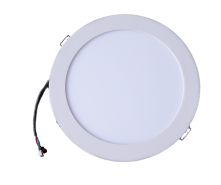Last Updated on February 24, 2025 by Solar Whiz
What’s the Deal with Ventilation Anyway?
During summer and sunny days, heat builds up in your roof space and subsequently radiates down through your ceiling. This transfer of heat (and moisture) warm indoor rooms and spaces and can account for around 25% to 35% of the heat gain in summer. Under these conditions, roof spaces can reach temperatures upwards of 60 degrees celsius. Whirlybirds are a common ventilation solution for homes and businesses, but it is important to consider the pros and cons of these units when compared to mechanical ventilators such as solar exhaust fans.
A Quick and Easy Resource for Comparison:
For the above reasons, we have produced the below table to give you a simple run-down of the advantages and disadvantages of a roof vent whirlybird.
| Advantages | Disadvantages |
|
Cheap and easy to install
|
Outdated design that depends on wind/airflow
|
|
Free to run
|
Frequently noisy operation
|
|
Operate automatically
|
Inefficient design that necessitates multiple installations
|
|
Frequent malfunctioning
|
|
|
Not Ideal for Steep Roofs
|
Solar whirlybirds and solar exhaust fans simply do a better job of ventilating roof spaces than traditional whirlybirds. They move more air, are vastly quieter, and are far more efficient.
Frequently Asked Questions
Do whirlybirds work?
“Do whirlybirds work?” Yes. Whirlybirds work to remove hot air from roof cavities, ventilating your room or space below. However, whirlybirds are wind-dependent to function properly. There are many reasons why you should consider other options for roof ventilation.
What is a roof whirlybird?
A roof whirlybird is a cylindrical dome that harnesses wind power to create a vacuum, pulling warm air out of your roof space. It is cheap and easy to install, but remember, you generally get what you pay for.
How do whirlybirds work?
Whirlybirds extract hot air in two ways: by convection and by producing a vacuum. The vacuum potential is driven by wind speed and draws heat out of the roof space. The stronger the wind, the more powerful the extraction. Multiple units may be needed for modern homes, up to four or six.
Are whirlybirds effective?
Whirlybirds, also known as roof vents or turbine vents, effectively cool indoor spaces. They operate by drawing out hot air from the attic or roof space, promoting better ventilation. However, their reliability depends on adequate wind to spin them. In areas with little wind, their effectiveness may be limited.
How much air does a whirlybird move?
An average whirlybird is capable of ventilating around 100-150 m³/h in 12 km/h winds individually. A whirlybird’s performance will vary from design to design. These factors may range from how warm the air is in your roof space (for air to expand), whirlybird throat size, wind accessibility, and wear & tear in the whirlybird unit itself.
How many whirlybirds do I need?
As a standard rule, your house should have 1 whirlybird for every 50 square meters of roof space. Averagely, a 2-bedroom house will need at least 2 roof vents, while a 4-bedroom house will need at least 3 roof vents, and for a 5-bedroom house, at least 4 roof vents are needed.
How many whirlybirds do I need for shed?
How Many Whirlybirds Do I Need for a Shed? As a standard rule, a roof needs one whirlybird or roof vent for 50 square metres. The number of whirlybirds largely depends on the shed’s layout and how much air volume needs to be ventilated.
Do whirlybirds make noise?
Yes. Whirlybirds Make A Lot Of Noise. If your whirlybird is making a lot of noise, it means that something is malfunctioning or broken in your whirlybird. A functioning whirlybird is almost silent and will only make noise if it’s broken. Incorrectly installed or cheap whirlybirds are often susceptible to this.
What are the disadvantages of whirlybirds?
While whirlybirds are frequently thought to be installed and forgotten about, they do require lubrication and cleaning in order to perform properly. They’re also not the most durable option, because they’re prone to rust and can be damaged by severe weather.




